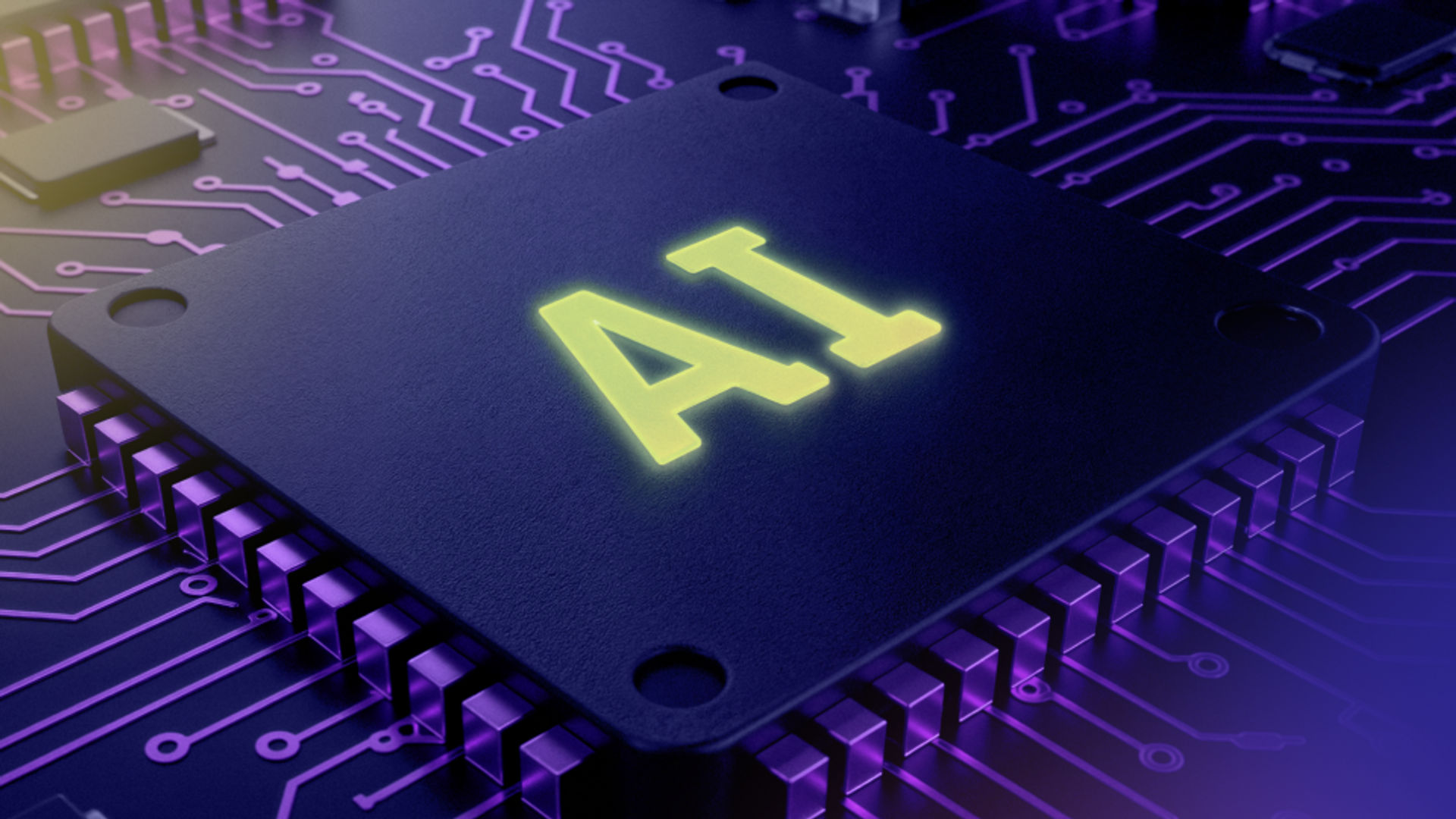Nowadays, AI compliance has become a critical priority for forward-thinking businesses. According to Gartner, by 2026, around half of governments will introduce responsible AI by making regulations, setting policies, and mandating data privacy. For companies relying on AI, compliance will no longer be optional; it will be a requirement for operating in most markets. Consequently, you must handle the growing use of AI by addressing compliance requirements and emerging risks.
On the opposite side, non-compliance can lead to severe consequences, including significant financial penalties, operational interruptions, and a negative impact on their reputation. We’d also like to mention that you need ethical procedures for AI systems that provide complete transparency while meeting all existing regulations.
This article describes essential AI compliance standards and specific methods for building innovative AI practices to safeguard your business from failure.
Why is AI compliance crucial?
As AI adoption accelerates across industries, compliance becomes more than a box to check — it’s a testimony that protects your business from reputational, financial, and legal fallout. Meeting regulatory expectations is the beginning of the journey. True AI compliance demonstrates your organization’s commitment to responsible innovation and long-term trust. Failure to comply with evolving AI standards introduces 3 major risks:
Legal risks
Under the European AI Act, non-compliance can result in severe penalties, up to €35 million or 7% of the company's annual revenue. Failure to comply with AI regulations will result in costly litigation and market restrictions. Therefore, you need to adapt to emerging regulations proactively.
Ethical risks
Organizations that put insufficient effort into ethical AI development are more likely to develop biased systems, which can negatively impact public trust levels. A discriminatory AI strategy in hiring or lending operations can damage a company's reputation. AI values now play a crucial role in maintaining client trust while evading regulatory oversight.
Operational risks
Regular audits and transparent AI model implementation are the main compliance steps that help companies prevent operational delays and resource waste. If regulatory changes are not addressed, AI deployment stops and diminishes business competitiveness.
Each AI implementation must meet industry-specific regulatory requirements and sector-specific rules. Consider these examples:
Healthcare. AI solutions must comply with strict patient data privacy conditions and health safety measures defined by regulation. For example, AI diagnostic apps must follow FDA regulations in the U.S. and GDPR guidelines in the EU to ensure privacy protection.
Finance. Through AI, the financial sector depends on fundamental algorithms for protective operations and trading systems. You must follow the careful AI regulatory compliance standards set by the Financial Action Task Force (FATF) to prevent potential problems in lending choices and market manipulation.
Retail. Data privacy laws' malfunctions, AI-based discrimination, and unfair pricing require retailers and e-commerce operators to maintain legal compliance within their operations.
Key aspects of AI compliance
Achieving AI compliance requires organizations to follow a combination of regulatory rules, operational best practices, and governance norms. Below are the primary components that need attention:
Regulatory frameworks
The most important aspect of achieving AI standards and regulations is directly implementing regulatory frameworks. Currently, the EU AI Act employs a risk-driven approach, which necessitates detailed monitoring for high-risk applications, such as healthcare AI and biometric recognition. GDPR established strict control over AI systems processing personal data, ensuring user privacy and data security.
Furthermore, you must also consider industry-specific rules that apply to the finance and medical sectors:
In banking and finance, it’s critical to comply with anti-money laundering (AML) rules and fraud detection regulations.
In the healthcare sector, medical AI apps must meet medical device requirements and align with patient safety standards such as the FDA and MDR.
AI governance & risk management
AI compliance management must maintain proper regulatory conformity throughout every phase of its life cycle, from development and deployment to ongoing monitoring. A comprehensive AI governance strategy includes:
ethical AI principles
performance tracking
risk prevention measures
routine audits in combination with performance evaluations
A dedicated team to supervise the development and deployment of AI strategies.
Moreover, a properly developed AI ethics, regulation, and risk management framework should help you detect potential security threats and compliance breaches early enough to minimize the risk of accidental complications.
Decision-making transparency
Financial and healthcare AI systems require transparent explanations for their decisions due to their significant impact on patients and clients. AI models must provide clear reasoning to human operators when making decisions.
Transparent AI systems enable organizations to:
develop foster trust
help identify biases and errors in their models
ensures ethical alignment
Explainable AI (XAI) allows your business to implement ethical measures while making AI-driven decision-making processes transparent through explainable mechanisms during operations, especially in high-stakes scenarios.
Data protection & privacy
AI systems processing large volumes of personal data must prioritize data protection and privacy compliance. To avoid penalties and breach consumer trust, AI must follow GDPR and CCPA data protection regulations.
Key data security measures such as data anonymization, encryption, and secure storage solutions help defend sensitive information from unauthorized access and misuse attempts. Ensure your AI model's training data complies with privacy laws and is dedicated to its intended use.


Thank you for Subscription!
Challenges in achieving AI compliance
Companies face substantial challenges when trying to implement compliance and AI successfully. Business operations encounter multiple barriers to meeting AI compliance needs, including regulatory changes and ensuring clarity and transparency. Here are the key compliance issues:
Evolving regulations
Companies struggle to adapt to rapid changes in AI legislation due to constant regulatory updates. To remain compliant, businesses must monitor ongoing updates to the AI Bill of Rights and adapt to evolving legal standards..
Bias and fairness concerns
Unintentional bias in AI-powered models raises serious concerns around fairness and outcome integrity. Discrimination in hiring or lending can trigger legal issues and harm brand reputation. To address this, you can run regular strategy audits and implement bias detection mechanisms that support fair AI operations.
Transparency and accountability
Complex AI models often function as black boxes, making it hard to trace their decision-making points. Ensuring AI compliance means applying best practices and maintaining clear accountability. At this point, you should adopt XAI to explain decisions, build customer trust, and meet regulatory demands.
Compliance across different jurisdictions
AI regulations vary across regions, creating a major challenge for maintaining consistency across jurisdictions. Each market requires tailored compliance approaches aligned with national rules, leading to complex regulatory adherence management systems.
How to ensure AI compliance?
You must maintain compliance when harnessing the full capabilities of AI technology, but what does it require, and why does it matter? It starts with setting clear operational guidelines.
AI governance involves developing precise guidelines and surveillance frameworks that control AI systems' design, implementation, and evaluation. The process needs definitions of accountability, performance metrics, and standard tests to check the algorithms' accuracy and fairness. Proper oversight structures are essential because failures in generative AI norms and regulations can lead to business reputation problems.
Here are several practical ways for improving AI conformity standards:
Implementing critical decisions should permanently replace human supervision with complete automation. The human factor ensures that AI techniques do not miss errors and biased results, which can occur despite their initial programming.
Red team testing (pen-testing) involves scheduled assessments where teams simulate attacks to uncover AI model vulnerabilities or biases. This human involvement helps enhance AI’s security and fair operation.
Independent compliance evaluations conducted by outside professionals help your organization detect organizational weaknesses in AI apps.
Implement AI to check systems continuously for compliance purposes. System operators should use accounts that automatically detect model behavior deviations while reporting possible violations.
The data lifecycle management process must guarantee proper training, data documentation, anonymization, and compliant storage alignment.
AI compliance tools
AI compliance tools fulfill regulatory criteria while improving AI performance, decreasing risks, and establishing better trust relationships with stakeholders. Let’s see why you must implement proper tools and frameworks.
Such tools streamline essential functions through automated operation, from identifying risks to running continuous monitoring functions. As we discussed, they enable you to meet EU AI Act and GDPR requirements and generate better performance and transparency from their AI systems.
Popular AI principles and regulation frameworks include:
The NIST AI Risk Management Framework serves as one of the primary tools for organizations that need to detect and control AI system risks.
ISO/IEC 42001 provides businesses with the world's initial measure for performance evaluation, alongside AI governance and security management.
The EU AI Act Guidelines consist of step-by-step requirements that regulate AI systems through visibility standards, human oversight protocols, and anti-biased protection measures.
At this point, we will take a look at some examples of AI risk management and monitoring solutions you can use to handle AI and regulatory compliance risks:
IBM OpenPages with Watson functions as an AI system that provides two key features: regulatory change monitoring and compliance risk management.
Fiddler AI enables businesses to monitor their models in real time and explain biases and decision-making processes to achieve better transparency.
TruEra enables platform testing of AI models to assess their accuracy, fairness dimensions, and compliance norms for producing actionable improvement results.
BigID uses AI to protect sensitive data by ensuring it receives appropriate regulatory protection.
SAS Risk Management is a comprehensive strategy that enables financial institutions and operational facilities to evaluate and manage risks associated with AI implementations.
NOTE: The impressive capabilities of AI tools, such as ChatGPT, cannot meet the requirements for tasks related to current legal and regulatory information. For instance, ChatGPT cannot keep up with the latest real-time technology regarding the newest regulations and legal standards, so it would be a less trustworthy source for examining freedom and legal obligations in a highly complex and changing compliance situation. It cannot promise to consider the most recent legal frameworks, essential to achieve total compliance.
Real-world example of AI compliance implementation
In 2024, the semiconductor equipment company ASML implemented Harvey and other AI tools to improve its legal processes. The new initiative focused on improving the accuracy and efficiency of processes related to compliance activities. Here’s a little review for you:
Challenges
The complex work required the organization to tackle extensive legal requirements while managing large amounts of documentation, which led to time-consuming processes and human errors.
Routine compliance checks required substantial personnel resources, which deprived the organization of deploying staff to its strategic projects.
Solutions
The company used AI tools to automate compliance processing and streamline processes, thus reducing human labor. Implementing AI automation also required human experts to monitor results and solve detection issues.
Results
Implementing AI technology resulted in:
ask processing advancements of 15% to 20%, enabling the legal department to pursue key strategic objectives.
The automation strategy improved compliance performance, leading ASML to comply better with regulatory norms.
The case shows that AI supports compliance activities efficiently with human supervision to preserve professional oversight.

More from our blog
Your practical guide to AI feasibility: gains, gaps, and solutions
Our technical feasibility study helps test project viability, reduce risk, and guide smarter decisions
Read moreUse cases for AI compliance across industries
AI compliance requirements vary by sector since each industry must meet its unique regulatory expectations. Here are some examples:
Healthcare
The medical and pharmaceutical markets employ AI in diagnostics, treatment planning, and patient care. These applications must comply with data protection laws such as HIPAA and GDPR to ensure the secure handling of personal health data.
Through AI, Mayo Clinic processes medical images to discover indicators of early disease detection. This institution's AI compliance strategy features tight data encryption, anonymization measures, and audit trail functionality to ensure HIPAA compliance and protect patient data.
Finance
Financial organizations use AI for fraud identification, credit score assessment, and algorithmic trading, yet the models must respect anti-discrimination measures to comply with financial regulations.
JPMorgan Chase uses AI-driven real-time fraud detection systems. The bank's compliance framework —which includes bias testing and model explainability, and regular audits —helps adhere to regulations and prevent discrimination in banking operations.
E-commerce
E-commerce benefits from AI through personal product suggestions, automatic pricing techniques, and fraud alert functions. But these advantages depend on strong consumer protection rules and data privacy standards.
Amazon generates product recommendations based on user activity data using AI. It focuses on time-based method checks of recommendation platforms and strengthens data protection measures to fulfill GDPR conditions.
Manufacturing
The integration of AI in manufacturing delivers benefits in both maintenance prediction and product quality detection, yet product safety and related legal requirements require thorough attention.
With AI, Siemens can forecast equipment malfunctions, enhancing manufacturing operational efficiency. As part of its compliance program, the company implements automated documentation and routine risk assessments to meet industry safety criteria.
Why choose Geniusee for AI compliance solutions?
We help you navigate AI compliance challenges through our expertise in governance, regulations, and risk assessment, enabling you to build compliant, efficient, and secure AI systems.
Why us?
Making a company AI compliant means solidifying systems that are protected, understandable, and fully usable. Other ventures may be generic, whereas we integrate regulatory ideas into every part of our process.
We know the areas where AI doesn’t meet standards and how to correct them
Together with partners in healthcare, fintech, and edtech, we enabled them to utilize AI that adheres to the standards of GDPR, the EU AI Act, and HIPAA. Both LLM-based assistants and recommendation engines in our system are aligned with both standard rules and specific regulations in various regions.
Regulatory updates — integrated, not afterthoughts
Changes in policy impact the majority of teams. We design them with their needs in mind from the outset. The software and compliance tools we use within our company are:
Policy-aligned architecture templates
Modular components for data logging, bias detection, and monitoring
Ready-to-export documentation for audits
That’s how we support teams in complying with new regulations as they come about.
ChatGPT by itself isn’t enough
Sophisticated features in DeepResearch enable it to surpass ChatGPT in understanding and explaining the latest and jurisdiction-specific regulations. Very few of them give practical strategies for putting things into action.
By utilizing internal legal-tech experts, technology for compliance work, and insights from related sectors, we can effectively connect these two parts.
Compliance built-in — not bolted on
We don’t just deliver models. We deliver:
Full traceability across the model lifecycle
Built-in model cards, risk logs, and version control
Human-in-the-loop (HITL) steps
Transparent outputs that hold up under scrutiny
AI compliance systems do not need to cause stress and headaches to your operations. Geniusee enables you to maintain regulatory compliance and achieve maximum AI approach value through its platform. Contact us to discover how our team will implement compliant AI solutions that are both efficient and scalable.
FAQs about AI compliance
What is AI compliance?
It is the standard of legal and ethical conditions and regulatory norms for AI systems. The framework for AI requires adherence to data security protocols, continuous prevention of unjust bias, transparency in operations, and effective risk management.
How can companies ensure compliance in AI?
Companies can achieve AI compliance by implementing robust governance systems, conducting regular audits, utilizing data privacy solutions, employing transparent models, and staying current with regulatory updates.
What are the key regulations governing AI?
A set of primary laws, rules, and practices, including the GDPR, the California Consumer Privacy Act (CCPA), and operational regulations specific to industries like HIPAA. The regulations specify rules about data privacy and the need for algorithm clarity and strategy fairness, which require organizations to maintain accountability in their operations.
What industries are most affected by AI regulations?
The regulations affect four primary sectors: healthcare, finance, e-commerce, and manufacturing. Due to their work with sensitive information and regulatory preparation needs, they must ensure compliance with their AI system implementations.





















